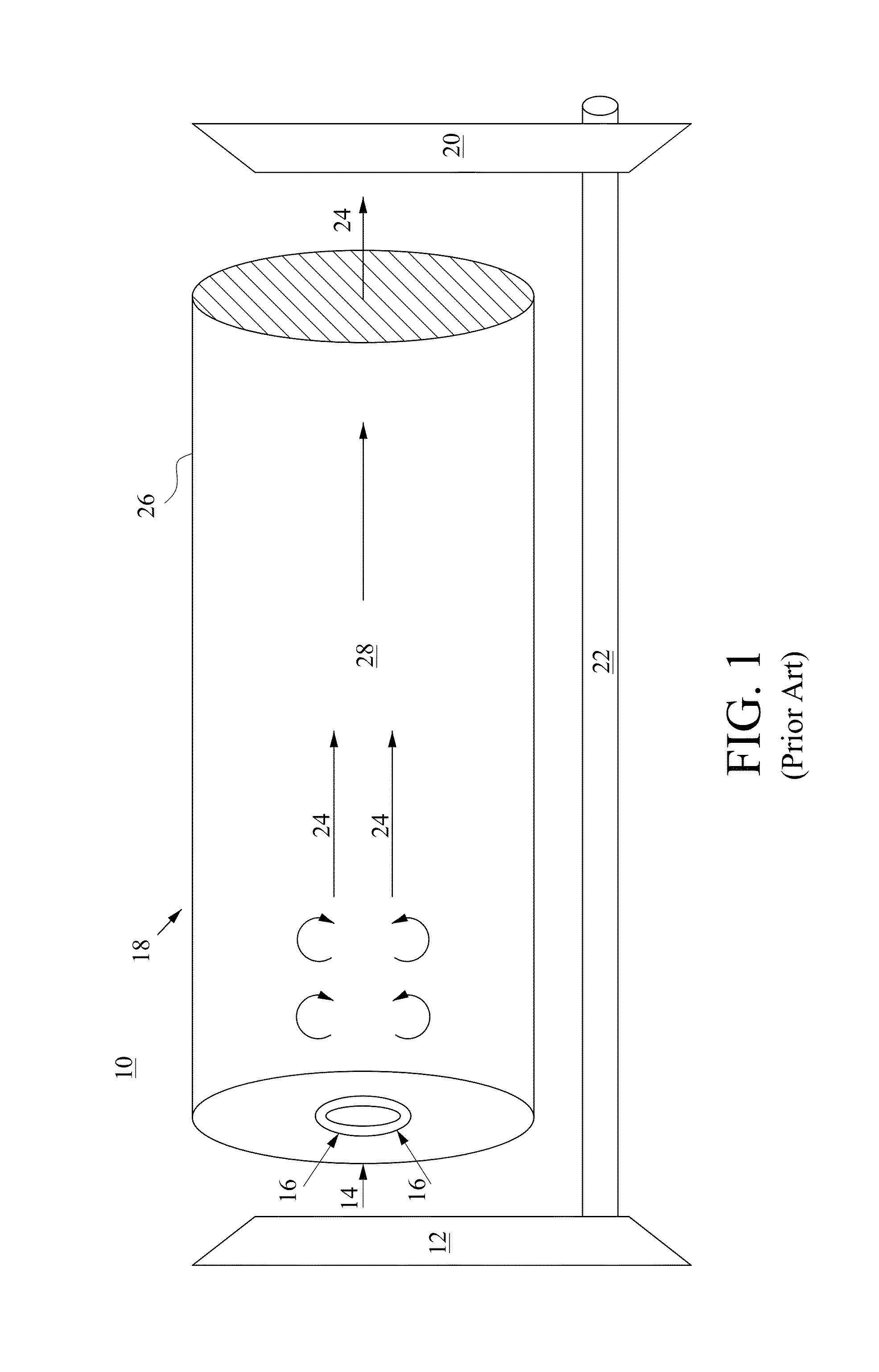Method for air entry in liner to reduce water requirement to control NOx
a liner and air entry technology, applied in continuous combustion chambers, combustion processes, lighting and heating apparatus, etc., can solve the problems of limited in its ability to achieve low levels of pollutants, unsatisfactory, and high temperature in combustion chamber primary zones, so as to reduce the temperature and nox emissions, reduce the water requirement, and reduce the cooling of the liner
- Summary
- Abstract
- Description
- Claims
- Application Information
AI Technical Summary
Benefits of technology
Problems solved by technology
Method used
Image
Examples
first embodiment
[0035]FIGS. 4A to 4C show a Dry Low NOx (“DLN”) combustion system incorporating the combustor liner 50 shown in FIG. 3. The DLN combustion system includes combustor liner 50, a nozzle 51 from which compressed air 14 and fuel 16 that is mixed with the compressed air 14 is discharged into combustor 50 and a diverging cone 53 positioned between nozzle 51 and combustor 50. An endplate 55 holds the body of the combustor 50 together.
[0036]In the preferred embodiment shown in FIGS. 4A to 4C, the mixing holes 60 are preferably arranged in two rows, which extend around the circumference of the cylindrical combustor wall 52, and which are proximate to the fuel entry end 54 of the cylindrical combustor wall 52. The dilution holes 52 are arranged in a single row, which replaces a third row of mixing holes that would typically be present in a conventional combustor. The row of dilution holes 52 preferably extends around the circumference of the cylindrical combustor wall 52, and is proximate to ...
second embodiment
[0037]FIG. 5A to 5C show a DLN combustion system incorporating the combustor 50 shown in FIG. 3. In the embodiment shown in FIG. 5A to 5C, the modified liner shown in the embodiment of FIGS. 4A to 4C is maintained. However, the embodiment shown in FIG. 5A to 5C also includes a modified cavity arrangement for much larger mixing of air with the combustion gases within the combustion chamber 28. Thus, as in the embodiment of FIGS. 4A to 4C, the dilution holes 52 are again moved to the third row of mixing holes 50 in combustor wall 62 so that dilution air is admitted into the combustor 50 at the third row of mixing holes 50, and, as such, the mixing holes 50 in the third row are removed. In the modified cavity arrangement, the mid-frame air 64 is divided into two paths, i.e., one path for a part of the mid-frame air 64 to continue to be admitted into the combustor 50 by entering through flow sleeve 66, and another path for another part 68 of the mid-frame air 64 to flow through a cavity...
third embodiment
[0038]FIG. 6A to 6C show a DLN combustion system incorporating the combustor 50 shown in FIG. 5. In the embodiment shown in FIG. 6A to 6C, the modified liner with relocated dilution holes, as shown in the embodiment of FIGS. 4A to 4C, is again used. In addition, the modified cavity arrangement for much larger mixing of air and combustion gases in the embodiment shown in FIG. 5A to 5C is again used. However, increased air flow of 10-15% is added to increase the penetration of air into the hot temperature zones in the combustion chamber 28. This is achieved by increasing the size / diameter of the dilution holes 62 though which air from pipes 72 is passed into combustor 50. Also, louver cooling air passing through the plurality of rows of louver cooling holes 58 in the combustor liner 50 is reduced by half from 25-35% of the mid-frame air flow 64 to 10-15% of the mid-frame air flow 64 by decreasing the size / diameter of the cooling holes 58. It is noted that 25-35% louver cooling is an o...
PUM
 Login to View More
Login to View More Abstract
Description
Claims
Application Information
 Login to View More
Login to View More - R&D
- Intellectual Property
- Life Sciences
- Materials
- Tech Scout
- Unparalleled Data Quality
- Higher Quality Content
- 60% Fewer Hallucinations
Browse by: Latest US Patents, China's latest patents, Technical Efficacy Thesaurus, Application Domain, Technology Topic, Popular Technical Reports.
© 2025 PatSnap. All rights reserved.Legal|Privacy policy|Modern Slavery Act Transparency Statement|Sitemap|About US| Contact US: help@patsnap.com



